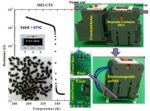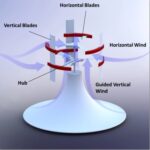MHPS Opens Global Service Center for Thermal Power Plants in the Philippines
Mitsubishi Hitachi Power Systems (MHPS) has opened a Global Service Center (GSC) for thermal power plant operators, centered on the Southeast Asia region in Alabang, Muntinlupa City in Metro Manila, Philippines. The Center will support the optimal operation and maintenance (O&M) of thermal power plants, harnessing the latest Information and Communications Technology (ICT), such as remote monitoring, and MHPS’s extensive accumulated knowledge of thermal power systems. In addition, it will provide training to increase the expertise of clients’ O&M engineers. The Center will begin to provide services this fall. An opening ceremony was held locally on the 16th and was attended by many VIPs such as Department of Trade and Industry (DTI) Undersecretary Rowel Barba and Ambassador Kazuhide Ishikawa from the Embassy of Japan, as well as executives from Southeast Asian and Japanese power plant operators, financial institutions and trading companies. President and CEO Takato Nishizawa and Executive Vice President Masao Ishikawa also attended from MHPS and presented an outline of GSC and its services for thermal power plants using ICT. The Global Service Center follows the remote monitoring centers set up in Takasago, Hyogo Prefecture in 1999 and Orlando, Florida in 2001. It will open with approximately 20 employees with excellent communication and technical skills from local group companies with the aim of promoting globalization and consideration will also be given to technology transfer from Japan and development of new services designed to meet the needs of Southeast Asia. The Center will have three main functions: – The Service Solution Center will act as a ‘one-stop shop’ for client needs, providing services such as management of maintenance parts and dispatch of emergency personnel. – The Remote Monitoring Center will not only perform remote monitoring but will also provide solutions for improving O&M based on early fault detection and optimized […]






